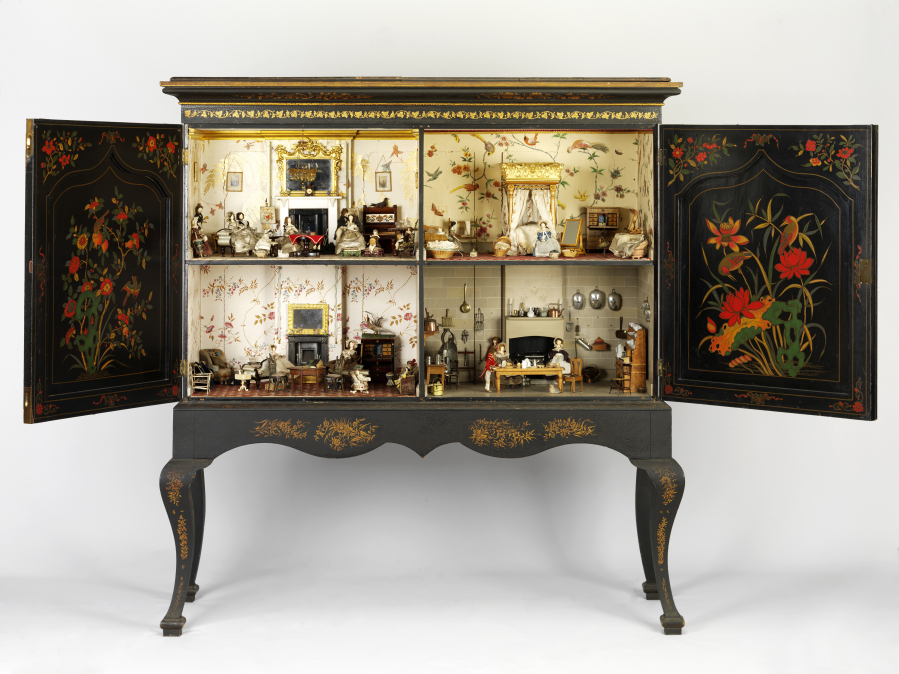WASHINGTON — When people today talk about a tiny house, they probably mean the trendy living space that’s about the size of a shed. But you would have to be 5 inches tall to live in the original tiny houses. Dollhouses, which have been around for several centuries, don’t offer shelter to real people, but they provide a glimpse of life in times and places both real and imaginary.
The National Building Museum lets visitors time travel in this tiny world through “Small Stories: At Home in a Dollhouse,” an exhibit open through Jan. 22. It features 12 dollhouses from the Victoria and Albert Museum in London, England, that contain amazing pint-size furnishings. But the curators, or those people who put together the exhibit, also wanted visitors to know the characters.
“It’s 300 years of British homes told through their inhabitants,” said Alice Sage, a curator from the London museum.
So as visitors peer inside the Tate Baby House, a fancy townhouse from 1760, they can push a button to hear a young woman get a lecture from her mother on the proper way to run a home. In the Killer Cabinet house, a servant named Betsy complains about the problems of city life in the 1830s. “We’ve got the cat to keep the rats away,” she says.



